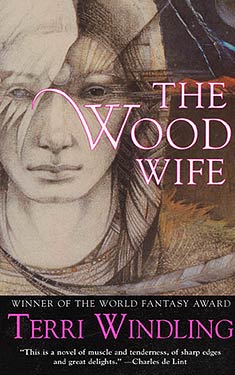Terri Windling
Completed 11/27/2021, Reviewed 11/27/2021
4 stars
What a surprise. This book was supposed to be part of Brian Froud’s Faerielands series, like Patricia McKillip’s Something Rich and Strange which I just read and reviewed. However, as Windling worked on it, it grew into its own novel. Still, Windling references Froud and his art in the novel and even dedicates the book to him. The faeries in this book though are the spirits of the American Southwest. Like the poet in her book, she’s British but moved to the Sonoran Desert and fell in love with it. It shows, as this is like a love letter to the region. In fact, it made me long for the high desert which I just visited earlier this year. The sights, the sounds, the mythology, are all part of the experience of this book. It won the Mythopoeic Award just two years after McKillip’s book.
Maggie Black is a writer who has been following the prize-winning poet Davis Cooper for years. She had been corresponding with him ever since she tried to interview him many years ago. When he suddenly dies under mysterious circumstances, she finds out he willed his property outside Tucson, Arizona to her. She moves there to try to piece together the last few decades of his life, looking for his lost poems of the southwest and coming face to face with the spirits he encountered as well. While there, she meets some of the renters on his property, including Johnny Foxxe, an attractive handyman and musician and Dora and Juan del Rio, a woman and her artist husband. Together, they try to unlock the mystery of Cooper’s life and death and the strange forces and inhabitants of this magical land.
The greatest strength of this book is how Windling makes the desert experience come alive. It reminded me of the first time I experienced Tucson many, many years ago, as well as my favorite place in the world, Moab, Utah. The spirits are slow in appearing in the book, mostly relegated to the last third, but the buildup is great as well, getting to know Maggie and the people on the property. I really liked her character. A former poet herself, she put her career on pause and pursued magazine work to support herself and her husband at the time. Once in Tucson, however, she begins to experience her own re-acknowledgement of her passion for writing poetry.
Needless to say, the world building is amazing in this book: the desert and the development of the spirits interacting with Maggie and the others come alive in a way I haven’t experienced in a book. Granted, I never read Edward Abbey, something I eventually want to do. The prose is wonderful, but the strength of the book lies in the telling of the story through dialogue. It slowly unravels the mystery of the desert denizens rather than through big info dumps.
I also liked the supporting players. Fox and Dora are particularly interesting. They are definitely part of the landscape of the desert. Fox is looking for that deep, spiritual connection to the land that Cooper had and experienced by Tomas, one of the other residents of Cooper’s land. Dora supports her husband artist, Juan, suppressing her own inner artist, similarly to Maggie. They all are very lifelike, three-dimensional characters, people you wish you had as neighbors in the desert.
I give this book four stars out of five. It touched on my love of desert places in an entertaining, non-preachy way. It translated the faerie world into the heart of the southwest. The result was a new mythology straight out of Windling’s imagination, but still feeling indigenous to the region. It was a refreshing break from the typical pastoral British faerie realm, something that I could relate to.

No comments:
Post a Comment